Exotic fish
-
Barracuda
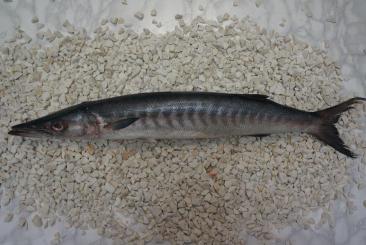 Read More
Read MoreThe barracuda is a ray-finned fish known for its large size, fearsome appearance and furious behaviour. The barracuda is a saltwater fish of the genus Sphyraena, the only genus in the family Sphyraenidae, and is found in tropical and subtropical oceans worldwide ranging from the Eastern border of the Atlantic Ocean to the Red Sea and Caribbean Sea. They are found near the top of the water and near coral reefs and sea grasses. Barracuda are snake-like in appearance, with prominent, sharp-edged, fang-like teeth, much like piranhas, all of different sizes, set in sockets of their large jaws. They have large, pointed heads with an underbite in many species. Their gill covers have no spines and are covered with small scales. Their two dorsal fins are widely separated, with the anterior fin having five spines, and the posterior fin having one spine and 9 soft rays. The posterior dorsal fin is similar in size to the anal fin and is situated above it. The lateral line is prominent and extends straight from head to tail. The spinous dorsal fin is placed above the pelvic fins and is normally retracted in a groove. The caudal fin is moderately forked with its posterior edged double-curved and is set at the end of a stout peduncle. The pectoral fins are placed low on the sides. Its swim bladder is large.
In most cases, a barracuda is dark blue, dark green, white, or gray on its upper body, with silvery sides and a chalky-white belly. Coloration varies somewhat between species. For some species, irregular and unorganized black spots or a row of darker cross-bars occur on each side. Their fins may be yellowish or dusky. Barracudas live primarily in oceans, but certain species, such as the great barracuda, live in brackish water.
Some species grow quite large (up to 165 cm in length), such as Sphyraena sphyraena, found in the Mediterranean Sea and eastern Atlantic; Sphyraena picudilla, ranging on the Atlantic coast of tropical America from North Carolina to Brazil and reaching Bermuda. Other barracuda species are found around the world. Examples are Sphyraena argentea, found from Puget Sound southwards to Cabo San Lucas, Sphyraena jello, from the seas of India and the Malay Peninsula and Archipelago. -
Baramundi
Read MoreThe barramundi or Asian sea bass (Lates calcarifer) is a species of catadromous fish in family Latidae of order Perciformes. The species is widely distributed in the Indo-West Pacific region from Southeast Asia to Papua New Guinea and Northern Australia. Known in Thai language as pla kapong, it is very popular in Thai cuisine. It is known as koduva in the Tamil language, kalaanji in Malayalam language, pandugappa in the Telugu language in India, bhetki in the Bengali language in eastern India and in Bangladesh as "Koral Machh", Modha in the sinhala language in Sri Lanka and chonak in the Konkani language in Goa in western India.
-
Red mullet
 Read More
Read MoreThey are both favored delicacies in the Mediterranean, and in antiquity were "one of the most famous and valued fish". They are very similar, and cooked in the same ways. M. surmuletus is perhaps somewhat more prized.The ancient Romans reared them in ponds where they were attended and caressed by their owners, and taught to come to be fed at the sound of the voice or bell of the keeper. Specimens were sometimes sold for their weight in silver. Pliny cites a case in which a large sum was paid for a single fish, and an extraordinary expenditure of time was lavished upon these slow-learning pets. Juvenal and other satirists descanted upon the height to which the pursuit of this luxury was carried as a type of extravagance.The statesman Titus Annius Milo, exiled to Marseille in 52 B.C., joked that he would have no regrets as long as he could eat the delicious red mullet of Marseille.
-
White grouper
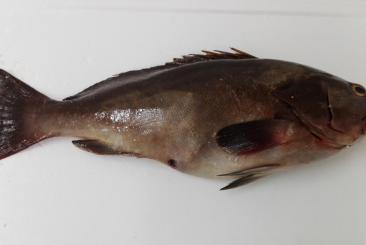 Read More
Read MoreThe white grouper (Epinephelus aeneus) is a species of grouper living in the subtropical eastern Atlantic Ocean and the southern Mediterranean Sea. It can reach a maximum length of 120 cm and a maximum weight of 25 kg.
Alternatively, the term "white grouper" is also used as a local vernacular name for several other species of fish, including the yellowedge grouper (Epinephelus flavolimbatus), Nassau grouper (Epinephelus striatus), and Venezuelan grouper (Mycteroperca cidi) -
Red grouper
 Read More
Read MoreThe red grouper (Epinephelus morio) is a species of fish in the Family Epinephelidae. The red grouper's typical range is coastal areas in the western Atlantic, stretching from southern Brazil to North Carolina in the US and including the Gulf of Mexico. This demersal, largely sedentary species has an extended (~40 day) pelagic larval stage before it settles in shallow coastal hardbottom habitat as juveniles. They remain in inshore waters for 4–5 years before migrating to offshore hardbottom habitat—particularly on the edge of the continental self—as adults. Spawning occurs offshore between January and June, peaking in May. While primarily eating benthic invertebrates, the red grouper is an opportunistic feeder in the reef community. The diet commonly includes xanthid and portunid crabs, juvenile spiny lobster, and snapping shrimp, with the occasional fish. The red grouper is of moderate size, about 125 cm and weighs 23 kg or more. Body coloration is typically reddish-brown color often with many white spots. When aggravated (they are highly territorial) or involved in spawning activities, these fish can very rapidly change coloration patterns, with the head or other parts of the body turning completely white, and the white spots appearing more intense.
-
Spotted grouper
Read MoreThe common name grouper is usually given to fish in one of two large genera: Epinephelus and Mycteroperca. In addition, the species classified in the small genera Anyperidon, Cromileptes, Dermatolepis, Gracila, Saloptia, and Triso are also called groupers. Fish in the genus Plectropomus are referred to as coralgroupers. These genera are all classified in the subfamily Epiphelinae. However, some of the hamlets (genus Alphestes), the hinds (genus Cephalopholis), the lyretails (genus Variola) and some other small genera (Gonioplectrus, Niphon, Paranthias) are also in this subfamily, and occasional species in other serranid genera have common names involving the word "grouper". Nonetheless, the word "grouper" on its own is usually taken as meaning the subfamily Epinephelinae.
-
Grouper small
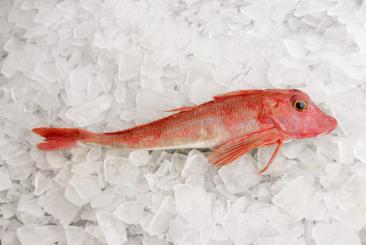 Read More
Read MoreThe common name grouper is usually given to fish in one of two large genera: Epinephelus and Mycteroperca. In addition, the species classified in the small genera Anyperidon, Cromileptes, Dermatolepis, Gracila, Saloptia, and Triso are also called groupers. Fish in the genus Plectropomus are referred to as coralgroupers. These genera are all classified in the subfamily Epiphelinae. However, some of the hamlets (genus Alphestes), the hinds (genus Cephalopholis), the lyretails (genus Variola) and some other small genera (Gonioplectrus, Niphon, Paranthias) are also in this subfamily, and occasional species in other serranid genera have common names involving the word "grouper". Nonetheless, the word "grouper" on its own is usually taken as meaning the subfamily Epinephelinae.
-
Tomato rockcod
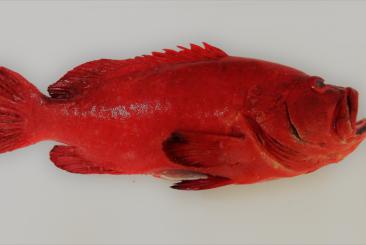 Read More
Read MoreThe common name grouper is usually given to fish in one of two large genera: Epinephelus and Mycteroperca. In addition, the species classified in the small genera Anyperidon, Cromileptes, Dermatolepis, Gracila, Saloptia, and Triso are also called groupers. Fish in the genus Plectropomus are referred to as coralgroupers. These genera are all classified in the subfamily Epiphelinae. However, some of the hamlets (genus Alphestes), the hinds (genus Cephalopholis), the lyretails (genus Variola) and some other small genera (Gonioplectrus, Niphon, Paranthias) are also in this subfamily, and occasional species in other serranid genera have common names involving the word "grouper". Nonetheless, the word "grouper" on its own is usually taken as meaning the subfamily Epinephelinae.
-
Red snapper
Read MoreNorthern red snapper are a prized food fish, caught commercially, as well as recreationally. It is used in Vietnamese canh chua ("Sour soup"). Red snapper is the most commonly caught snapper in the continental USA (almost 50% of the total catch), with similar species being more common elsewhere. They eat almost anything, but prefer small fish and crustaceans. They can be caught on both live and cut bait, and also take artificial lures, but with less vigor. They are commonly caught up to 4.5 kg (10 lb) and 510 mm (20 in) in length, but fish over 18 kg (40 lb) have been taken.
Recreational fishing for northern red snapper has been popular for a long time, restricted mostly by fishing limits intended to ensure a sustainable population. The first minimum size limit was introduced in 1984, after a 1981 report described quickly declining harvests (both commercial and recreational)[11] From 1985 to 1990, the annual recreational catch of red snapper was about 1.5 million. From 1991 to 2005, the catch was substantially higher, varying from year to year from 2.5 to 4.0 million.
When northern red snapper bite on a line, they tend to be nibblers and pickers, and a soft touch is needed when trying to catch them. Because the older red snapper like structure, anglers use bottom fishing over reefs, wrecks, and oil rigs, and use line and supplies in the 50-lb class. Since the anglers have to both choose the right bait and present it correctly, they tend to use multiple hooked baits. Favorite baits include squid, whole medium-sized fish, and small strips of fish such as amberjack. Although many northern red snapper are caught on the bottom, in some situations the larger fish are caught on heavy jigs (artificial lures), often tipped with a strip of bait or by freelining baits at the proper upper level.
Interest in recreational fishing for northern red snapper, and in the Gulf of Mexico in general, has increased dramatically. From 1995–2003, the number of Louisiana fishing charter guide license holders increased eight-fold.
Since 1990, the total catch limit for northern red snapper has been divided into 49% for recreational fishermen and 51% for commercial. Commercially, they are caught on multiple-hook gear with electric reels. Fishing for red snapper has been a major industry in the Gulf of Mexico, but permit restrictions and changes in the quota system for commercial snapper fishermen in the Gulf have made the fish less commercially available. Researchers estimate the bycatch of young red snapper, especially by shrimp trawlers, is a significant concern.
Genetic studies have shown many fish sold as red snapper in the USA are not actually L. campechanus, but other species in the family. Substitution of other species for red snapper is more common in large chain restaurants which serve a common menu nationwide. In these cases, suppliers provide a less costly substitute (usually imported) for red snapper. In countries such as India, where the actual red snapper is not available in its oceans, John snapper, Russell snapper, or a tomato red snapper are sold as "red snapper". -
Red snapper fillet
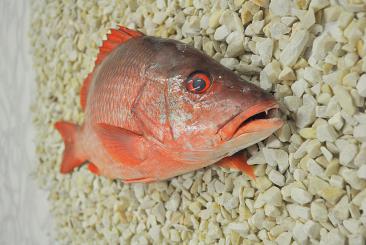 Read More
Read MoreNorthern red snapper are a prized food fish, caught commercially, as well as recreationally. It is used in Vietnamese canh chua ("Sour soup"). Red snapper is the most commonly caught snapper in the continental USA (almost 50% of the total catch), with similar species being more common elsewhere. They eat almost anything, but prefer small fish and crustaceans. They can be caught on both live and cut bait, and also take artificial lures, but with less vigor. They are commonly caught up to 4.5 kg (10 lb) and 510 mm (20 in) in length, but fish over 18 kg (40 lb) have been taken.
Recreational fishing for northern red snapper has been popular for a long time, restricted mostly by fishing limits intended to ensure a sustainable population. The first minimum size limit was introduced in 1984, after a 1981 report described quickly declining harvests (both commercial and recreational)[11] From 1985 to 1990, the annual recreational catch of red snapper was about 1.5 million. From 1991 to 2005, the catch was substantially higher, varying from year to year from 2.5 to 4.0 million.
When northern red snapper bite on a line, they tend to be nibblers and pickers, and a soft touch is needed when trying to catch them. Because the older red snapper like structure, anglers use bottom fishing over reefs, wrecks, and oil rigs, and use line and supplies in the 50-lb class. Since the anglers have to both choose the right bait and present it correctly, they tend to use multiple hooked baits. Favorite baits include squid, whole medium-sized fish, and small strips of fish such as amberjack. Although many northern red snapper are caught on the bottom, in some situations the larger fish are caught on heavy jigs (artificial lures), often tipped with a strip of bait or by freelining baits at the proper upper level.
Interest in recreational fishing for northern red snapper, and in the Gulf of Mexico in general, has increased dramatically. From 1995–2003, the number of Louisiana fishing charter guide license holders increased eight-fold.
Since 1990, the total catch limit for northern red snapper has been divided into 49% for recreational fishermen and 51% for commercial. Commercially, they are caught on multiple-hook gear with electric reels. Fishing for red snapper has been a major industry in the Gulf of Mexico, but permit restrictions and changes in the quota system for commercial snapper fishermen in the Gulf have made the fish less commercially available. Researchers estimate the bycatch of young red snapper, especially by shrimp trawlers, is a significant concern.
Genetic studies have shown many fish sold as red snapper in the USA are not actually L. campechanus, but other species in the family. Substitution of other species for red snapper is more common in large chain restaurants which serve a common menu nationwide. In these cases, suppliers provide a less costly substitute (usually imported) for red snapper. In countries such as India, where the actual red snapper is not available in its oceans, John snapper, Russell snapper, or a tomato red snapper are sold as "red snapper". -
Silverscabbardfish
 Read More
Read MoreThe silver scabbardfish (also frostfish, beltfish), Lepidopus caudatus, is a cutlassfish of the family Trichiuridae found throughout the temperate seas of the world. It grows to over 2 metres (6 ft 7 in) in length.
-
Parrot fish
Read MoreParrotfish are named for their dentition, which is distinct from other fishes, including other labrids. Their numerous teeth are arranged in a tightly packed mosaic on the external surface of their jaw bones, forming a parrot-like beak with which they rasp algae from coral and other rocky substrates (which contributes to the process of bioerosion).
Maximum sizes vary within the family, with the majority of species reaching 30–50 cm (12–20 in) in length. However, a few species reach lengths in excess of 1 m (3 ft 3 in), and the green humphead parrotfish can reach up to 1.3 m (4 ft 3 in).[7] The smallest species is the bluelip parrotfish (Cryptotomus roseus), which only reaches 13 cm (5.1 in) -
John Dory
Read MoreThe cookery writer Eliza Acton observes in her 1845 book, Modern Cookery for Private Families, that John Dory "though of uninviting appearance, is considered by some persons as the most delicious fish that appears at table". She recommends simply baking it "very gently", avoiding drying it out in the oven.
-
Mahi Mahi
Read MoreMahi-mahi can live up to 5 years, although they seldom exceed four. Catches average 7 to 13 kilograms (15 to 29 lb). They seldom exceed 15 kilograms (33 lb), and mahi-mahi over 18 kilograms (40 lb) are exceptional.
Mahi-mahi have compressed bodies and a single long-based dorsal fin extending from the head almost to the tail. Their caudal fins and anal fins are sharply concave. They are distinguished by dazzling colors: golden on the sides, and bright blues and greens on the sides and back. Mature males have prominent foreheads protruding well above the body proper. Females have a rounded head. Females are also usually smaller than males.
The pectoral fins of the mahi-mahi are iridescent blue. The flank is broad and golden. 3 black diagonal stripes appear on each side of the fish as it swiftly darts after prey.
Out of the water, the fish often change color (giving rise to their Spanish name, dorado, "golden"), going though several hues before finally fading to a muted yellow-grey upon death.
Mahi-mahi are among the fastest-growing fish. They spawn in warm ocean currents throughout much of the year, and their young are commonly found in seaweed. Mahi-mahi are carnivorous, feeding on flying fish, crabs, squid, mackerel, and other forage fish. They have also been known to eat zooplankton and crustaceans.
Males and females are sexually mature in their first year, usually by 4–5 months old. Spawning can occur at body lengths of 20 cm. Females may spawn two to three times per year, and produce between 80,000 and 1,000,000 eggs per event.
In waters averaging 28 °C/83 °F, mahi-mahi larvae are found year-round, with greater numbers detected in spring and fall. In one study, seventy percent of the youngest larvae collected in the northern Gulf of Mexico were found at a depth greater than 180 meters. Spawning occurs normally in captivity, with 100,000 eggs per event. Problems maintaining salinity, food of adequate nutritional value and proper size, and dissolved oxygen are responsible for larval mortality rates of 20-40%. [8] Mahi-mahi fish are mostly found in the surface water. Juveniles feed on shrimp, fish and crabs found in rafts of Sargassum weeds. Their flesh is soft and oily, similar to sardines. The body is slightly slender and long, making them fast swimmers; they can swim as fast as 50 knots (92.6 km/h, 57.5 mph). -
Mahi Mahi fillet
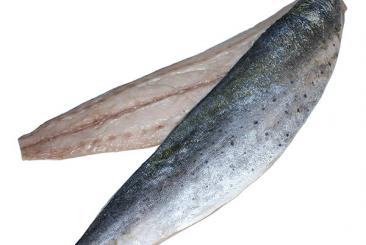 Read More
Read MoreMahi-mahi can live up to 5 years, although they seldom exceed four. Catches average 7 to 13 kilograms (15 to 29 lb). They seldom exceed 15 kilograms (33 lb), and mahi-mahi over 18 kilograms (40 lb) are exceptional.
Mahi-mahi have compressed bodies and a single long-based dorsal fin extending from the head almost to the tail. Their caudal fins and anal fins are sharply concave. They are distinguished by dazzling colors: golden on the sides, and bright blues and greens on the sides and back. Mature males have prominent foreheads protruding well above the body proper. Females have a rounded head. Females are also usually smaller than males.
The pectoral fins of the mahi-mahi are iridescent blue. The flank is broad and golden. 3 black diagonal stripes appear on each side of the fish as it swiftly darts after prey.
Out of the water, the fish often change color (giving rise to their Spanish name, dorado, "golden"), going though several hues before finally fading to a muted yellow-grey upon death.
Mahi-mahi are among the fastest-growing fish. They spawn in warm ocean currents throughout much of the year, and their young are commonly found in seaweed. Mahi-mahi are carnivorous, feeding on flying fish, crabs, squid, mackerel, and other forage fish. They have also been known to eat zooplankton and crustaceans.
Males and females are sexually mature in their first year, usually by 4–5 months old. Spawning can occur at body lengths of 20 cm. Females may spawn two to three times per year, and produce between 80,000 and 1,000,000 eggs per event.
In waters averaging 28 °C/83 °F, mahi-mahi larvae are found year-round, with greater numbers detected in spring and fall. In one study, seventy percent of the youngest larvae collected in the northern Gulf of Mexico were found at a depth greater than 180 meters. Spawning occurs normally in captivity, with 100,000 eggs per event. Problems maintaining salinity, food of adequate nutritional value and proper size, and dissolved oxygen are responsible for larval mortality rates of 20-40%. [8] Mahi-mahi fish are mostly found in the surface water. Juveniles feed on shrimp, fish and crabs found in rafts of Sargassum weeds. Their flesh is soft and oily, similar to sardines. The body is slightly slender and long, making them fast swimmers; they can swim as fast as 50 knots (92.6 km/h, 57.5 mph). -
Mahi Mahi steak
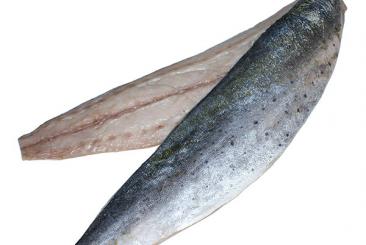 Read More
Read MoreMahi-mahi can live up to 5 years, although they seldom exceed four. Catches average 7 to 13 kilograms (15 to 29 lb). They seldom exceed 15 kilograms (33 lb), and mahi-mahi over 18 kilograms (40 lb) are exceptional.
Mahi-mahi have compressed bodies and a single long-based dorsal fin extending from the head almost to the tail. Their caudal fins and anal fins are sharply concave. They are distinguished by dazzling colors: golden on the sides, and bright blues and greens on the sides and back. Mature males have prominent foreheads protruding well above the body proper. Females have a rounded head. Females are also usually smaller than males.
The pectoral fins of the mahi-mahi are iridescent blue. The flank is broad and golden. 3 black diagonal stripes appear on each side of the fish as it swiftly darts after prey.
Out of the water, the fish often change color (giving rise to their Spanish name, dorado, "golden"), going though several hues before finally fading to a muted yellow-grey upon death.
Mahi-mahi are among the fastest-growing fish. They spawn in warm ocean currents throughout much of the year, and their young are commonly found in seaweed. Mahi-mahi are carnivorous, feeding on flying fish, crabs, squid, mackerel, and other forage fish. They have also been known to eat zooplankton and crustaceans.
Males and females are sexually mature in their first year, usually by 4–5 months old. Spawning can occur at body lengths of 20 cm. Females may spawn two to three times per year, and produce between 80,000 and 1,000,000 eggs per event.
In waters averaging 28 °C/83 °F, mahi-mahi larvae are found year-round, with greater numbers detected in spring and fall. In one study, seventy percent of the youngest larvae collected in the northern Gulf of Mexico were found at a depth greater than 180 meters. Spawning occurs normally in captivity, with 100,000 eggs per event. Problems maintaining salinity, food of adequate nutritional value and proper size, and dissolved oxygen are responsible for larval mortality rates of 20-40%. [8] Mahi-mahi fish are mostly found in the surface water. Juveniles feed on shrimp, fish and crabs found in rafts of Sargassum weeds. Their flesh is soft and oily, similar to sardines. The body is slightly slender and long, making them fast swimmers; they can swim as fast as 50 knots (92.6 km/h, 57.5 mph). -
Greater amberjack
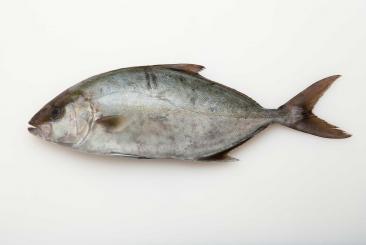 Read More
Read MoreThe greater amberjack (Seriola dumerili) is a jack of the genus Seriola. It is found in the Mediterranean Sea, the Atlantic Ocean, the Pacific Ocean and the Indian coasts, living usually between 20 and 70 m of depth (with a maximum of 360 m). It is the largest genus in the Carangidae family, with a maximum length of 200 cm. It is a fast-swimming pelagic fish with similar habits to the kingfish. They are silver-blue with a golden side line, with a brown band crossing over the eye area.
The greater amberjack is a powerful hunter which feeds on other fish and invertebrates.
The greater amberjack is prized by sports fisherman because it is a very powerful fish and can be quite large, even as much as 70 kg. It is an excellent eating fish. It is also a big-game fish and are one of the greatest fighting fish pound for pound. -
Rascasse
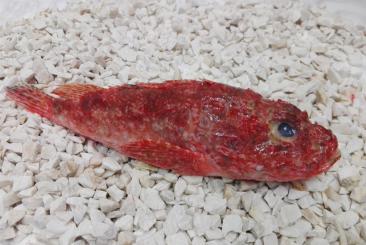 Read More
Read MoreScorpaena scrofa is a traditional ingredient in Marseille bouillabaisse. It is also widely used in Japanese cuisine. Scorpaena scrofa is the largest eastern Atlantic scorpion fish. Colouration ranges from brick-red to a light pink, and it has dark coloured blotches on its body. It has venomous spines, can achieve a maximum weight of approximately 3 kilograms (6.6 lb). It can grow to a maximum length of 50 centimetres (20 in), but is commonly around 30 cm (12 in).
